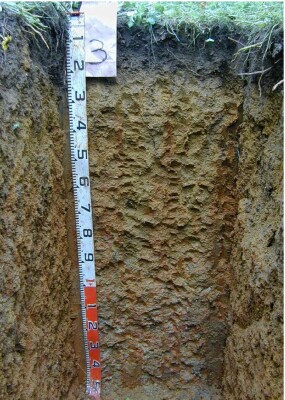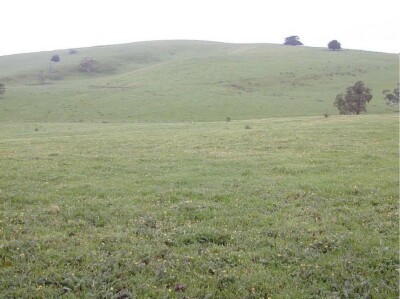| A1 | 0-20 cm | Dark brown (10YR3/3) clay loam, moderate granular structure (10-20 mm) parting to moderate granular structure (2-5 mm), very weak consistence when moderately moist, few medium ferruginous nodules, common medium roots. Abrupt and smooth transition to: |  |
 | Subsoil |  |
| B21 | 20-60 cm | Yellowish brown (10YR5/6) with common coarse distinct red (2.5YR4/6) mottles, light clay, moderate polyhedral structure (20-50 mm) parting to moderate polyhedral structure (5-10 mm), weak consistence when moderately moist, few medium ferruginous nodules, few fine macropores, areal porosity 0.3%, common very fine roots. Diffuse and smooth transition to: |
| B22 | 60-100 cm | Yellowish brown (10YR5/6) with many coarse distinct red (2.5YR4/6) mottles, light clay, moderate polyhedral structure (20-50 mm) parting to moderate polyhedral structure (5-10 mm), weak consistence when moderately moist, few medium ferruginous nodules, few fine macropores, areal porosity 0.3%, few very fine roots. Gradual and smooth transition to: |
| B23 | 100-150 cm | Red (2.5YR4/6) with many coarse prominent light yellowish brown (10YR6/4) mottles, light clay, strong polyhedral structure (20-50 mm) parting to strong polyhedral structure (5-10 mm), firm consistence when moderately moist, few medium ferruginous nodules, few fine macropores, areal porosity 0.3%, few very fine roots. |
 | 150-400 cm | Medium clays, a little harder with depth but no impeding layer to roots, decomposing rock between 350-400 cm, and may become impeding to roots, live roots found at 350-400 cm. |




